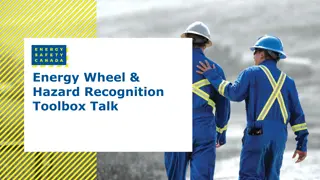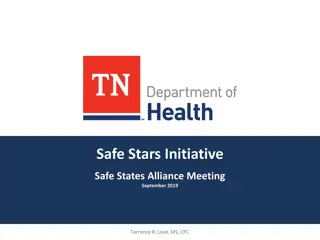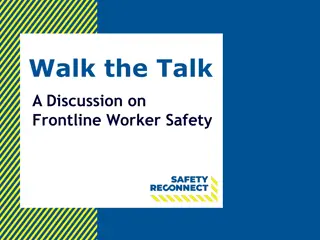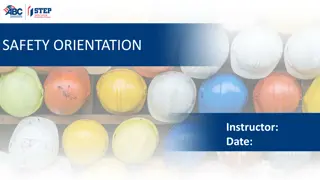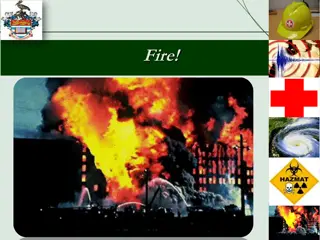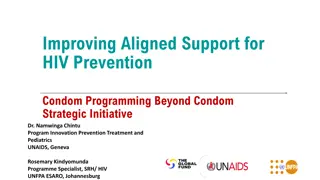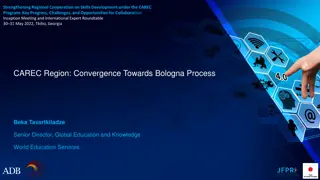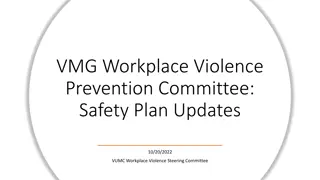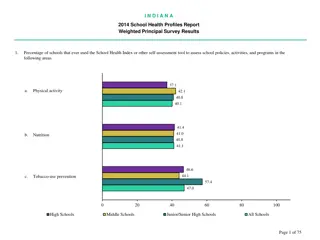Fainting Safety: Prevention and Recognition Strategies
Fainting, medically known as syncope, is a sudden loss of consciousness that can be caused by various factors like dehydration, heat, anxiety, or low blood pressure. This presentation debunks the myth of knee-locking causing fainting and focuses on prevention strategies such as proper hydration, nutrition, and recognizing symptoms to avoid injury and potential hazards associated with fainting episodes.
Download Presentation

Please find below an Image/Link to download the presentation.
The content on the website is provided AS IS for your information and personal use only. It may not be sold, licensed, or shared on other websites without obtaining consent from the author. Download presentation by click this link. If you encounter any issues during the download, it is possible that the publisher has removed the file from their server.
E N D
Presentation Transcript
FAINTING SAFETY Presentation By SWR Assistant Safety Officer Lt Col Melanie Capehart
FAINTING SAFETY The following presentation is provided to debunk the myth that if you lock your knees for a prolonged period of time it will cause you to faint. This is misinformation and there is no medical evidence to support this premise. The main reason that we ask our members to not lock their knees during formations, long periods of time, etc. is to prevent injury in case you faint due to an underlying medical condition(which can be amplified by locking your knees). By not locking your knees, you will likely slump to the floor instead of falling over rigid like a tree causing injury to yourself or others.
MAIN FOCUS PREVENTION AND RECOGNITION OF POTENTIAL FOR FAINTING CAUSED BY; Standing for prolonged periods coupled with any or all of the following: Dehydration Poor nutrition Lack of sleep Stress 3
THIS IS ONLY AN OVERVIEW This is NOT MEDICAL advice This is a Broad overview on cases of fainting This DOES NOT replace appropriate, sound, medical consultation and treatment after fainting
FAINTING DEFINED AS: Syncope is a sudden, brief loss of consciousness associated with loss of postural tone from which recovery is spontaneous -Dr. Sergio B. Seoane Medically known as syncope or commonly called Blacking out or Passing Out 5
CONTRIBUTING FACTORS OF FAINTING AS FOLLOWS: Dehydration Heat High Altitude Anxiety Low Blood Pressure Stroke Medications 6
SYMPTOMS OF FAINTING Possible common symptoms you may or may not have Before you faint. Weakness/Fatigue Lightheadedness Shakiness Nausea Blurred Vision Tunnel Vision See Spots 7
RISKS HAZARDS FROM FAINTING Broken bones Busted teeth Head injury Stitches Blood Loss Knocking others over Possible major medical expenses Embarrassment Interruption of event or activity 8
PREVENTION OF FAINTING Hydration Stay hydrated with well balanced electrolyte intake well before any event that may require standing for a prolonged length of time. Balanced Meal Make sure everyone has had a well balanced meal before any event or activity. Appropriate Rest Recommended rest is six to eight hours of uninterrupted sleep before any event or activity. Let someone know right away ...if you feel like your going to faint. Sit down immediately to prevent falling, then cool down and rest 9
CAN LOCKING KNEES CAUSE FAINTING Locking your knees ...may or may not be a contributing factor to fainting. While locking your knees does slow blood return back up from your legs, it usually isn t a single contributing factor to fainting. Other factors previously highlighted are also usually present such as dehydration, poor nutrition, medical conditions, lack of sleep, stress etc.
HOW TO PREVENT LOCKING KNEES Frequently wiggle your toes. Keep your knee slightly bent at all times. When possible, keep everyone at Parade Rest, allow to walk in place, or keep at ease when standing in place for prolonged periods of time. Offer reminders to everyone before any performance or event to not lock their knees. The purpose of not locking the knees is to allow a member to drop straight down if they faint and not fall over like a tree injuring themselves or others. 11
HOW TO HELP PREVENT FAINTING Ensure; Proper nutrition, adequate sleep, report all medical conditions and medications to leadership and maintain adequate hydration. Remember; do not lock your knees, frequently wiggle your toes, and keep knees slightly bent while standing at attention, as the muscles contracting and relaxing helps push blood back up to your heart/head and so on. From wikipedia: The return of blood to the heart is assisted by the action of the skeletal-muscle pump, and by the thoracic pump action of breathing during respiration. Standing or sitting for a prolonged period of time can cause low venous return and venous pooling.
FINAL NOTE REMEMBER; STAY HYDRATED MAINTAIN NUTRITION GET ADEQUATE SLEEP REDUCE STRESS DON T LOCK YOUR KNEES STAY SAFE 13
QUESTIONS? Thank you for taking time to review this presentation and Increasing your knowledge and awareness on a topic that as CAP leaders and mentors and members are faced with in many events and activities. Please feel free to let the SWR Safety Team if there is any information that can help increase all of or knowledge on this topic or any other topic that will help keep all of us safe in all that we do. Safety First is Safety Always 14




